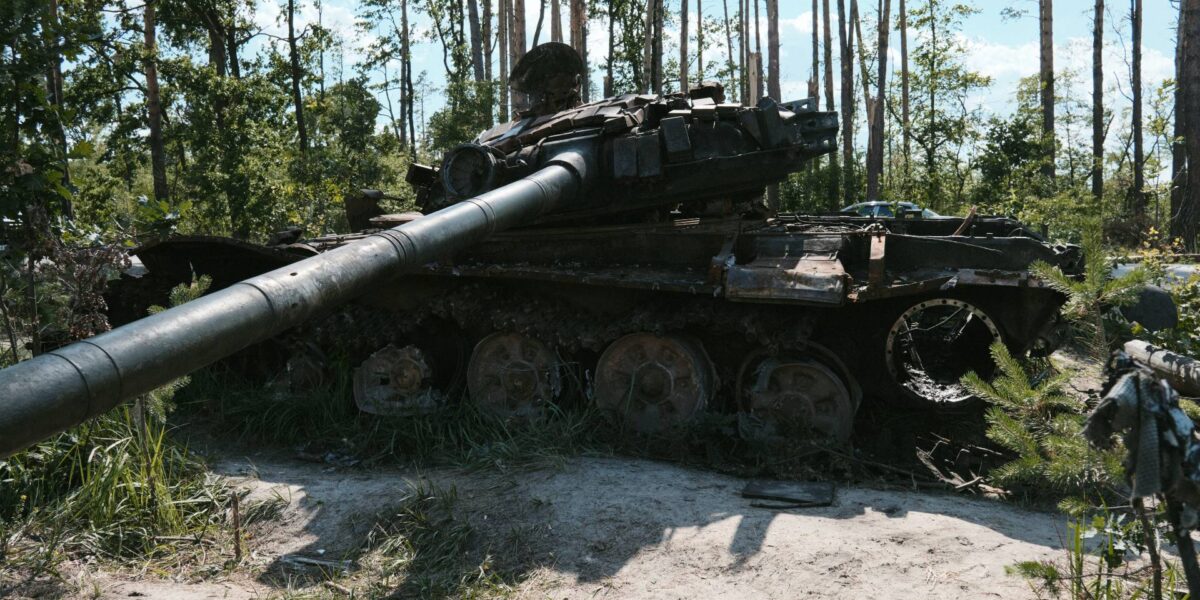Much-decorated World War II general and 34th US President Dwight D. Eisenhower issued a stern warning about the emergence of the “military-industrial complex” in his 1961 farewell address.
Eisenhower said “This conjunction of an immense military establishment and a large arms industry is new in the American experience…Yet we must not fail to comprehend its grave implications… In the councils of government, we must guard against the acquisition of unwarranted influence, whether sought or unsought, by the military-industrial complex. The potential for the disastrous rise of misplaced power exists and will persist.”
Artists amplified his warning. But between Bob Dylan’s 1963 release of Masters of War, Buffy Sainte-Marie’s 1964 Universal Soldier, and her 2017 song, The War Racket, the military-industrial complex only grew mightier, and politicians more subservient.
On September 22, Canada’s Members of Parliament stood with Ukrainian president Volodymyr Zelenskyy to give former Nazi Waffen-SS Galicia Division fighter Yaroslav Hunka two standing ovations, after former House Speaker Anthony Rota praised him as a “Ukrainian war veteran from the Second World War who fought for Ukrainian independence against the Russians and continues to support the troops today.”
That same day, Prime Minister Trudeau released a statement saying “Canada reaffirms our unwavering support for Ukraine for as long as it takes,” characterizing the fight as one for “freedom and democracy.”
Both Rota’s and Trudeau’s statements lacked critical analysis.
Trudeau’s statement cited “$9.5 billion in multifaceted assistance” from Canada to Ukraine since 2022. This amounts to $247 CAD from each Canadian, exceeding the per capita US contribution ($76.8 billion, $230 USD per capita) based on our respective currencies.
Trudeau’s statement pledged another $650 million for Canadian-made armored vehicles. Other governments are giving Ukraine ever-more sophisticated equipment, such as battle tanks and modern fighter aircraft. Guns, tanks, armored vehicles, fighter jets – where does this end? With atom bombs?
After World War II, the US eagerly sought out Nazi scientists and found lucrative new careers for them, pivoting from war with Germany to cold war with Russia. Some 1,600 German scientists, engineers, and technicians were secretly moved to the US in Operation Paperclip. Canada also welcomed ex-Nazis.
Consider Wernher von Braun, a loyal member of the Nazi Party and the SS who designed and built – using concentration camp labor — the V2 rockets that inflicted immense suffering in Britain. He later designed US missiles for nuclear weapons delivery and space travel. Tom Lehrer’s 1965 song about him is well worth viewing.
If the conflict in Ukraine is a NATO proxy war with Russia, led by U.S. interests — as leaked documents suggest — of what benefit is it to Canadian families struggling to make ends meet?
There were healthy arguments in the U.S before the start of the Ukraine war, such as The progressive agenda requires a strong military and no, the left should not ‘learn to love’ the military-industrial complex. In October 2022, a group of progressive democrats sent a letter to US President Joe Biden urging talks to end the war, but then retracted it.
We need a national debate about this. Why can’t Canada engage in diplomacy, and urge the warring parties to negotiate? In whose interest is it to fight “as long as it takes”?
Wars are fought with fossil fuels as well as guns. Young people demanding climate action should be equally vocal for an end to war.
Let’s heed Eisenhower’s warning. Uncritical support for war is perpetuating the military-industrial complex and accelerating the climate crisis.



